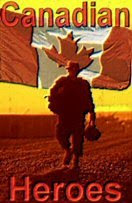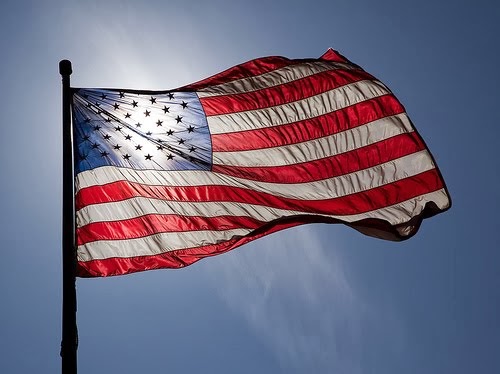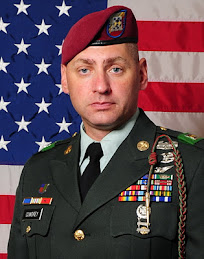
From the
Telegraph:
Captain Hamish Pelham-Burn
Captain Hamish Pelham-Burn, who has died aged 92, was one of the Second World War’s Renaissance men, and displayed his lethal talents variously as a soldier, fighter pilot and behind-the-lines saboteur with SOE.
20 Apr 2011
In March 1944 SOE ordered Pelham-Burn to return to England from Camp STS 103, Canada, where he had been instructing potential agents in sabotage. He reported to the Baker Street HQ and was asked whether he was prepared to lead a small demolition team which would be dropped into France with the objective of destroying a radar installation.
A close friend, also in SOE, had been killed in what Pelham-Burn regarded as a botched mission and he agreed to go only if he could have the two Canadian sergeants, Andy McClure and Jack Clayton, with whom he had worked at the camp.
In the early hours of the morning, three days before D-Day, they were dropped by a Wellington into rough, rolling Brittany country with rocky outcrops, with Pelham-Burn carrying detonators in a cotton-wool-lined box taped to his chest. After burying their parachutes in the bracken, they moved as fast and silently as possible to within 200 yards of their objective, where a hut with a single window and a sentry stood before the mast.
Pelham-Burn cut the telephone line. Clayton dealt with the sentry. The charges were taped to the mast and the time pencils set with a 20-minute delay. The whole operation had taken four minutes. As they were creeping away, there was a flash of light followed by a great explosion: one of the pencils had detonated prematurely.
Germans ran out of the hut firing in all directions. A dispatch rider on a motorcycle started off down the road, and Pelham-Burn had to shoot him despite the fact that this revealed their position.
The two sergeants picked off the rest of the Germans with single, well-aimed shots. The mast was a pile of charred and twisted girders.
Pelham-Burn led the way to a small farm that was to be their “safe house”. For the next five days, the three men hid in the hay in a small cupboard-like extension of the barn. They were then picked up by Lysander.
Pelham-Burn recommended his two colleagues for Military Medals. As for his own wartime feats of derring-do, many seem destined to remain unknown, details having mysteriously disappeared from his service file.
Charles Hamish Pelham-Burn was born at Nairn, in the Highlands, on March 17 1918. He was brought up at Killiecrankie, Perthshire, and then at Kilmory Castle, Argyll. An idyllic childhood was interrupted by preparatory school in Sussex. He detested the place and, in the hope of being expelled, tried to burn it down. He was beaten instead. After Harrow, where he was captain of golf and in the cricket XI, he went to Sandhurst and was subsequently commissioned into the Seaforth Highlanders and posted to the 2nd Battalion.
As a junior officer, he found peacetime soldiering very dull. Climbing, fishing, shooting and driving sports cars occupied his leisure moments but, in 1940, he accompanied his battalion to France as part of the BEF. During the withdrawal he managed to get hold of a BSA motorbicycle and, travelling by roads crammed with refugees and strafed by German bombers, reached Cherbourg.
To escape from the tedium of regimental soldiering, Pelham-Burn volunteered for a temporary transfer to the RAF and was sent to flying school. He became adept at crosswind landings, sideslipping, stalling, spinning and aerobatics and was the first on the course to be allowed to go solo. But he disliked the strain of having to fly in formation....
Much more here.
You can also find more on Captain Pelham-Burn on a WW2 forum here.
And there is this:
Reproduced with permission of Jim NcBeth and the Scottish Daily Mail from Saturday, March 5th, 2011

Hamish Pelham Burn on the ridges overlooking Oshawa - 1943
ON a night when the moon did not exist, the squat building was an indistinct shadow. Captain Hamish Pelham-Burn moved with the litheness of a cat, his face painted black beneath a woollen cap. The secret warrior’s skill and the explosives in his bergen were about to change the course of the Second World War.
He froze in the darkness at the sound of a German sentry’s voice. As he waited, the luminous dial of his watch revealed he had only minutes to complete his mission. In a few hours, the biggest seaborne invasion in history would land troops on the beaches of Normandy,and this unremarkable, heavily-guarded radar installation behind enemy lines held the key. If it remained intact, it would forewarn the enemy. Reduce it to rubble, and the silence could preserve the lives of thousands of Allied soldiers. Pelham-Burn, the 27-year-old scion of a distinguished family of Scottish landed gentry, directed his two companions to keep a lookout as he crawled forward. When he re-emerged minutes later, he had time only to offer a thumbs-up sign before an explosion made madness of the night, sending great gouts of flames into the sky. In the mayhem, Britain’s greatest but least-known saboteur led his men to the coast where they would be picked up. By the early hours of June 6, 1944, the great armada was sailing towards Continental Europe. For four years, Pelham-Burn had delivered sterling service to the nation and now, as the last nails were about to be driven into Adolf Hitler’s coffin, his war was over.
The secret and significant nature of his exploits is not yet to be found in history books, nor revealed in the chapters of self-aggrandising biographies of old soldiers extolling their long-forgotten heroics. The full details of the nation’s debt to Pelham-Burn, who died last month at the age of 92, remain hidden in manila folders which have gathered dust for seven decades in the National Archives in London and remain sealed under the Official Secrets Act until January 1, 2019.
THROUGHOUT his long life the perennial bachelor, farmer, conservationist and mountaineer took his wartime oath of secrecy so seriously that he rarely spoke of his career as one of the first of Churchill’s Special Operations Executive – the almost mythical secret army which, from 1940, waged its ‘dirty war’. In the years before the invasion, Pelham-Burn had killed Germans and destroyed their installations while working alone or alongside French resistance fighters and Yugoslav partisans. Later, at secret bases in the Highlands and Canada, he passed on his expertise, moulding and training the new breed of warrior nicknamed ‘commandos’ – silent killers who would inspire fear and pass into legend.
It is only the anecdotal testimony of those closest to him that offers an insight into the bravery of the shy, unknown hero who passed away at Pitlochry Community Hospital in Perthshire. Few who thought they knew the old warrior realise the crucial role he played in the war. ‘Hamish Pelham-Burn is certainly the bravest man I have ever known,’ says Lynn Philip Hodgson, the author of Inside Camp X and Dispatches from Camp X, the secret base in Canada where, from 1943 until 1944, Pelham-Burn was a chief instructor. ‘He was a good friend and a real hero, although you would not have known it to talk to him,’ adds the Canadian author.
The old soldier, who spent his last years in a residential care home, had another unique claim to fame, and one which never failed to make him blush. When he trained SOE operatives in Scotland, one of his ‘pupils’ was Ian Fleming, the creator of James Bond...
Go read the rest
here, and be grateful that such men lived.
Rest in Peace, Sir.


































